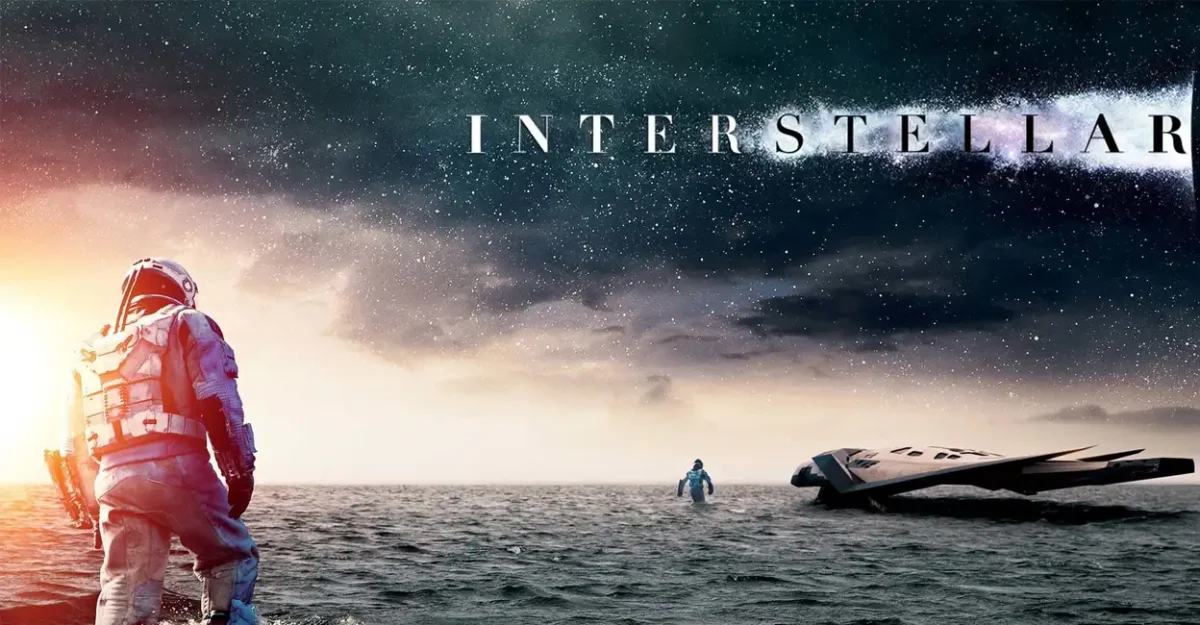On Dec. 6, 2024, Christopher Nolan’s film Interstellar, known for its Academy Award-winning soundtrack, is slated to return to IMAX theaters for a limited time. Nolan, the director for other hit Hollywood films such as Oppenheimer, Inception, Dunkirk, and The Dark Knight, is recognized by many as one of the greatest and most influential directors of the modern age. He is known for his ability to create unique and creative stories through his utilization of unique plot events, breathtaking scores, and masterful cinematography, all of which make his films complex and compelling.
Interstellar first debuted in theaters on Nov. 7, 2014, and became an immediate box office success, generating more than $700 million to date. The plot follows the story of a team of astronauts who travel through a wormhole in search of a new habitable planet for humanity as Earth faces an ecological disaster. The cast includes Matthew McConaughey, Anne Hathaway, and Jessica Chastain, and the film covers numerous important themes, such as the power of human connection, the awe and wonder of space exploration, and humanity’s fragile relationship with time.
While certainly taking some creative and artistic liberties, as with all films, Interstellar is generally lauded by experts as grounded in plausible scientific theory, though it stretches these connections to create its famous compelling narrative. This is in most part thanks to the work of Nobel-laureate physicist Kip Thorne and his contributions to ensure the depictions of wormholes and relativity were as accurate as possible.
“I remember watching Interstellar for the first time during freshman year in my JanTerm Exploring the Cosmos,” said junior Lahiri Nooka. “It really opened my eyes to a ton of different parts of physics and astronomy that I hadn’t really known about before: things like time dilation and wormhole travel, and that’s apart from the fact that the movie is just really so visually beautiful and that it has a great and emotional story.”
Nooka also recommends everyone watch the film to expand their understanding of topics that might generally be outside their interests.
“I think that it’s worth everyone’s time to watch Interstellar at least once,” she said. “I have no plans on studying anything related to space or physics, but the film was still able to educate and expand my knowledge on this particular aspect of astrophysics. However, Interstellar isn’t just about space travel. It’s also about survival, love, sacrifice, and human connection. It brings up questions of what it means to be human in the face of extinction, and I think that those questions are really things that are worth considering.”
Another common feature of the film noticed among those who have seen it was the jaw-dropping use of cinematography and visual effects. This work was done by cinematographer Hoyte van Hoytema, who would go on to work with Christopher Nolan on some of his future films such as Dunkirk, Tenet, and Oppenheimer.
“Interstellar’s really what introduced me to the cinematography side of movies,” said junior and aspiring cinematographer Chris Qin. “I feel like before, I watched movies for enjoyment, but Interstellar was definitely the thing that introduced me to cinematography and filmmaking, which is something that I’m interested in pursuing as a career.”
Something that makes Interstellar so special is its ability to blend real scientific imagery, albeit altered, into the fictionalized narrative of the movie. It makes it so that the audience feels wonder and amazement as if they are getting to see the universe in motion. It has been described at times as if the film was the world’s most expensive documentary rather than a fictional film, and trying to stay as scientifically accurate as possible meant that for some frames each took up to 100 hours to render. All in all, when the film was completed, the total amount of data consumed was an astronomical–no pun intended–800 terabytes. It is no surprise, then, that the film was awarded the prestigious Academy Award for Best Visual Effects.
The soundtrack is one of the film’s most defining features that makes it so iconic; such a grand and dramatic space epic required an equally grandiose and spectacular soundtrack. The score was created for the film by Grammy Award-winning composer Hans Zimmer, including such pieces as “Cornfield Chase,” “Day One,” and “No Time for Caution.”
“When Christopher Nolan hired Hans Zimmer to write this, he didn’t tell him what the movie was, he didn’t tell him anything about it,” said Westminster’s director of bands, Will Pitts. “He just kind of gave him ideas of, you know, things being large or things being grandiose or things being tense or nervous or anxious, and he didn’t really give any context otherwise.”
“Zimmer started writing all of these figures and kind of landed on this idea of using the pipe organ as an instrument that gets used throughout the whole film,” Pitts said. “A pipe organ is kind of this living, breathing instrument in a way, because it is literally pushing air out and you press the key and the air releases through the pipe…. The pipe organ is kind of the star, as like the main voice of the music.”
Pitts stated that he was excited for the film to come back to theaters, believing that for films as large and grand as Interstellar, it is best to see them in the way that they were intended to be seen with the fullest frame and the fullest context of how it was created–on the big screen with the large atmos-style sound system that accompanies it. He also stated that he thought that it was worth watching the movie again, regardless of how many times a person has seen it through other mediums such as a phone, tablet, or TV, just to be able to experience the most authentic experience possible. He still remembers his experience of watching and hearing the music on the big screen.
“I still have a vivid memory of the first time I saw it and how heavy the subwoofer was underneath me during this one scene,” Pitts said. “So that’s the thing I get most excited about is just the opportunity to truly experience the movie as intended.”
Interstellar continues to inspire future generations of viewers and stands as a testament to the power and tenacity of storytelling and human curiosity. The re-release is more than just a reminder of its tenth anniversary: it is a chance to reflect on the past decade and to look forward to what lies ahead, not only for cinema but also for humanity’s future, whether on earth or in the stars.
Edited by Lucas Liu





